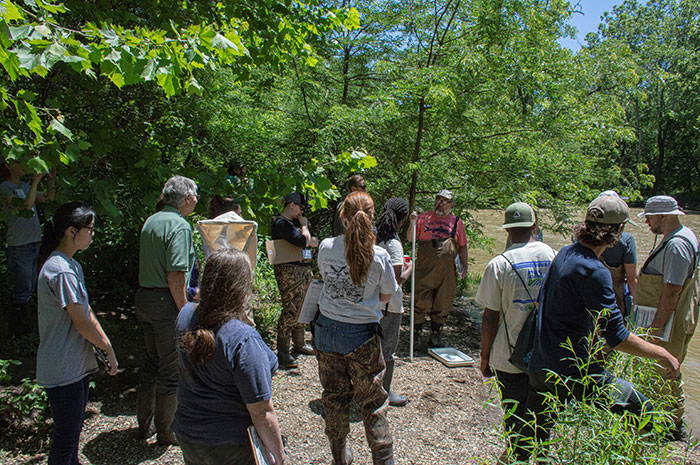It’s getting close to that time of year once again where the spring weather will be suitable for forays out into the field for a number of reasons from just enjoying a hike by a stream or the serious collection of data for a project. Coincidentally with the pending arrival of spring, MBI will offer a variety of training classes in aquatic bioassessment ranging from professional level courses to training for those who are interested in what has become known as “citizen science”. MBI’s offerings can be found on the MBI website (www.midwestbiodiversityinst.org) under the Education tab and while it is not the intent of this article to describe each course I am focusing on why training is needed in the first place and why is it important?
One and perhaps the most obvious reason for training is that it is required to conduct work for regulatory purposes. In Ohio, most of this is governed by the Ohio Credible Data Law and Regulations which offer certifications for Qualified Data Collectors or “QDCs” and at different levels of rigor and expertise. For example, the Ohio Credible Data Law clearly states that any data submitted to Ohio EPA for the purpose of determining if an impairment exists or to affect a use designation in the Ohio Water Quality Standards (WQS) must be collected and processed by Level 3 QDCs under an approved Project Study Plan. For non-regulatory purposes data collected by Level 2 QDCs is sufficient. Regardless of the level required, all of the specialties require training and certification in addition to a demonstration of minimum educational and experience credentials. In these instances training is a requirement that must be satisfied.
However, the virtues of training are not simply to fulfill a requirement in that the “box” is simply “checked off”. Receiving training also means that a transfer of the knowledge and experience of a qualified instructor is being transferred to a trainee. MBI takes the opportunity to make training a growth experience beyond simply collecting a sample and crunching data. Important and frequently intangible concepts pertaining to policy and science are integrated with the hope that a trainee will be able to apply that knowledge in their professional pursuits. Training is also important to assure the accuracy and reproducibility of a particular biological or habitat assessment methodology. All Level 3 trainees receive in-depth information about the Ohio WQS and how they are to be applied including details about the proper conduct of a Use Attainability Analysis (UAA) which is an indispensable prerequisite for making decisions about which of the tiered aquatic life uses should be applied to a given stream or river reach. This, in turn, affects determinations of impairment and how permits and water quality certifications are issued for specific projects. As such the training received is a linchpin to the accurate administration of several important Clean Water Act programs. Level 2 trainees are likewise exposed to these fundamental concepts and with the hope that some will progress to Level 3. Training offerings for Primary Headwater Habitat and Wetland Assessment methods offered by MBI similarly include important instruction about policy and practice in addition to methods.
Training in the use of the Qualitative Habitat Evaluation Index (QHEI) is made even more critical by the inherent “visuality” of the method. It is thus critical to pass along the important visual recognition cues that can only be done via personal instruction and is why the seminal methods documents call for such training not only once, but with an annual refresher course. Twenty-five years ago Ed Rankin showed that training reduces the variability among scorers by a significant degree. Unfortunately, we are seeing too many instances where the QHEI is being used by persons who have not received formal QHEI training and some is being done for regulatory purposes. This only underscores the importance of attending a training course to receive instruction and also with the assurance that it makes ones work products better.
In addition to all of this, the importance of citizen science and efforts by volunteers should not go overlooked. Training is important at this level as well as it likewise provides a way to make the results more consistent via data collection using standardized methods. Citizen science and volunteer efforts are useful in that they can expand the geographic coverage beyond what professionals might be able to undertake, thus making the consistency of citizen data even more important. Such standardized data can then be entered into citizen science databases.

